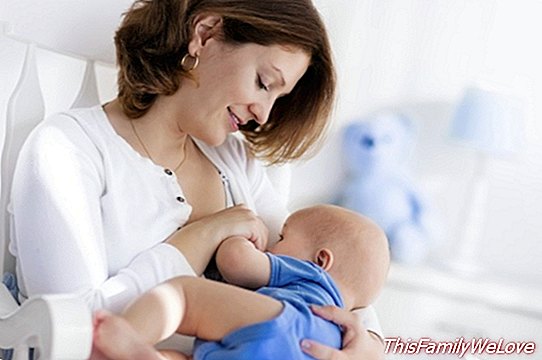How to avoid mastitis during breastfeeding

The mastitis is one of the great concerns of mothers who decide to give Breastfeeding to their babies. How to prevent it and, in the event that it appears, how to treat it is one of the first concerns that emerge. It is normal for the breasts to show some swelling after delivery and to increase the sensitivity between the second and sixth postpartum days.
What is mastitis?
This engorgement or breast engorgement that occurs in both breasts occurs when the breasts produce more milk than the baby is able to extract, increasing both in size and causing pain. One of the solutions to resolve breast engorgement is the application of local heat prior to intake to facilitate milk flow; lactation on demand, being normal that the demand is every hour and a half to two hours and after the intake, the application of local cold. Usually these symptoms disappear at 48 hours.
Occasionally, obstructions may occur, also known as noninfectious mastitis when one of the ducts of a breast becomes plugged and the milk is retained. It is an inflammation that affects only one breast and not the entire gland but only one (or several) of its lobes. The treatment is the same as for engorgement: massage, breastfeed frequently, assess that the breastfeeding position is correct, apply cold between shots, if that relieves pain, and heat before taking.
Infectious mastitis during breastfeeding
We must differentiate breast engorgement from mastitis, which is usually infectious and is caused by a stagnation of milk in the ducts of a breast and its infection caused by bacterial microorganisms. The cases of infectious mastitis that occur during the breastfeeding period do not usually occur in the early stages of breastfeeding but are later onset.
The main causes of this stagnation can be:
- A bad hook of the child to the chest so it does not empty properly.
- Cracks in the nipples for bad hook.
- Decrease in the number of shots and the duration of breastfeeding
Infectious mastitis, as its name suggests, occurs when there is an infection of the glandular ducts of the breast. Wounds or cracks in the nipple are entry points for the bacteria, causing an infection that causes the chest area to swell and close the milk ducts. This type of mastitis generates clear symptoms such as fever, chills, general malaise, decay, chest pain and sometimes even the symptoms are visible since a swelling in the chest, redness and localized heat may appear.
How can you avoid mastitis during breastfeeding?
The most important thing is the correct emptying of the breasts, in addition to:
- Make more frequent shots and on demand, without pre-established schedules.
- In each shot offer a breast and not give of the other until it is completely empty.
- Apply heat 10 minutes before taking This will facilitate dilation of the ducts and it will be easier for them to empty. After taking, apply cold to relieve pain and reduce inflammation. Do not apply cold or heat directly on the skin, because it can cause burns, make on a cloth or handkerchief.
- Analgesics and anti-inflammatories if they were necessary.
- Antibiotics. Do not self-medicate, in case you suspect that you have an infection go to your doctor to assess the appropriate treatment.
Can I breastfeed with mastitis?
Yes, indeed mastitis poses no danger to the baby. In fact, stopping breastfeeding, in addition to being unnecessary, can be harmful. A sudden weaning can increase the risk of an abscess (pus accumulation), which would require surgical intervention.
Myriam Viudes. Matron of the Hospital La Milagrosa in Madrid




